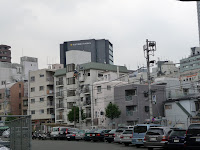But, seriously it will be somewhat weird to not have to be working on something for www.rateadrug.com, at least as far as the internship is concerned. I have my final paper basically written, I just need to put in some more supporting information from my survey results, and I should be done. That will be weird, I have worked on this thing practically nonstop since I got the raw data. Although, it will be nice to focus only on school, this is intended to be my last semester seeking a degree and thus I don't have the option of taking things again if I don't do well. Plus, I want to take a glassblowing class and that will take up more time.
When I began this blog I started out by talking about the medical treatments for Hydrocephalus. It seems only fitting that I finish with talking about that subject. It makes the whole thing tie up in one neat knot, I think.
We have talked about Acetazolamide and Furosemide and illustrated the mechanisms by which they work. In the case of both of these medications they are essentially used to decrease the amount of CSF that is retained in the body - commonly known as loop diuretics (for further info on those two drugs check out the links to previous posts). And, according to http://emedicine.medscape.com/article/1135286-treatment both Acetazolamide and Furosemide work well for infants. Basically any medical treatment for Hydrocephalus must cover only the acute as long term use of either Acetazolamide or Furosemide can cause damge to the body. Chronic Hydrocephalus must be treated surgically.
I have, however, found a new medication I was previously unaware of: Isosorbide.
I will talk about Isosorbide, and if I can, I want to find a video of the shunt insertion surgery, I can't guarantee that I will, but I think I can at least link it.
The use of medication to treat Hydrocephalus is a controversial topic. It is believed that the best way to provide a 'normal' life for anyone who has Hydrocephalus is to perform a surgical procedure and either shunt - punt in a valve that dumps off excess pressure - or to perform a interventriculostomy - basically a hole is drilled between the ventricles of the brain to allow for absorption of CSF and to relieve pressure by spreading it out across the brain.
Isosorbide Mononitrate looks like this to a chemist:
Unfortunately, I am taking biochem this semester, so I can't talk about what this thing does in your body exactly, but I do have some good resources at my fingertips.
Isosorbide mononitrate is in a class of drugs called nitrates. Isosorbide mononitrate dilates (widens or relaxes) blood vessels (arteries and veins). When blood vessels are dilated, it is easier for the heart to pump. Also, more blood, which is rich in oxygen, can flow to the heart.
(http://www.drugs.com/isosorbide_mononitrate.html)
And, of course, www.rateadrug.com has some interesting resources for anyone who is taking Isosorbide, or wants to know more about it. According to
Dlmeyers1970:
When I first started taking the medication it gave my significant headaches, dizziness and a stomach ache, but after one week the side effects stopped. I am so glad for this medication because it has stopped my coranary artery from spasming and the chest pain is finally gone. I used to have chest pain, in varying strengths, all day long, and now I am chest pain free.Of course, that person is talking about taking the medication for angina and other heart-related troubles, but it can be used for short term treatment of Hydrocephalics as well.
(http://www.rateadrug.com/Isosorbide-Mononitrate-side-effects.aspx)
I have managed to get some videos of the procedures I have been talking about. The first will be a short animation about insertion of a VP shunt - the VP shunt is the most common shunt that I see opst-operatively. Basically with the VP shunt the end of the catheter is placed in the periotoneal cavity so the body can re-absorb the extra CSF.
The second is from a thing I found on youtube.com where a neurosurgeon is giving a basic definition of Hydrocephalus.
Lastly, there will be a link to a video of an actual surgical procedure. I can't, and won't, post that on here due to it's code and it's gory content, but the link is well worth watching. The video should be about an hour long.
http://www.or-live.com/distributors/NLM-Flash/nep_2553/rnh.cfm?id=838
Sorry, it took me so long to figure out how to post video, but I did at the end! Best for last!
That concludes our internship, and our internship blog. Thanks for staying tuned. I have really appreciated tdoing this work. Thanks also to www.rateadrug.com for giving me a shot at working with them in this internship.
Bye, and stay classy internet.






















































